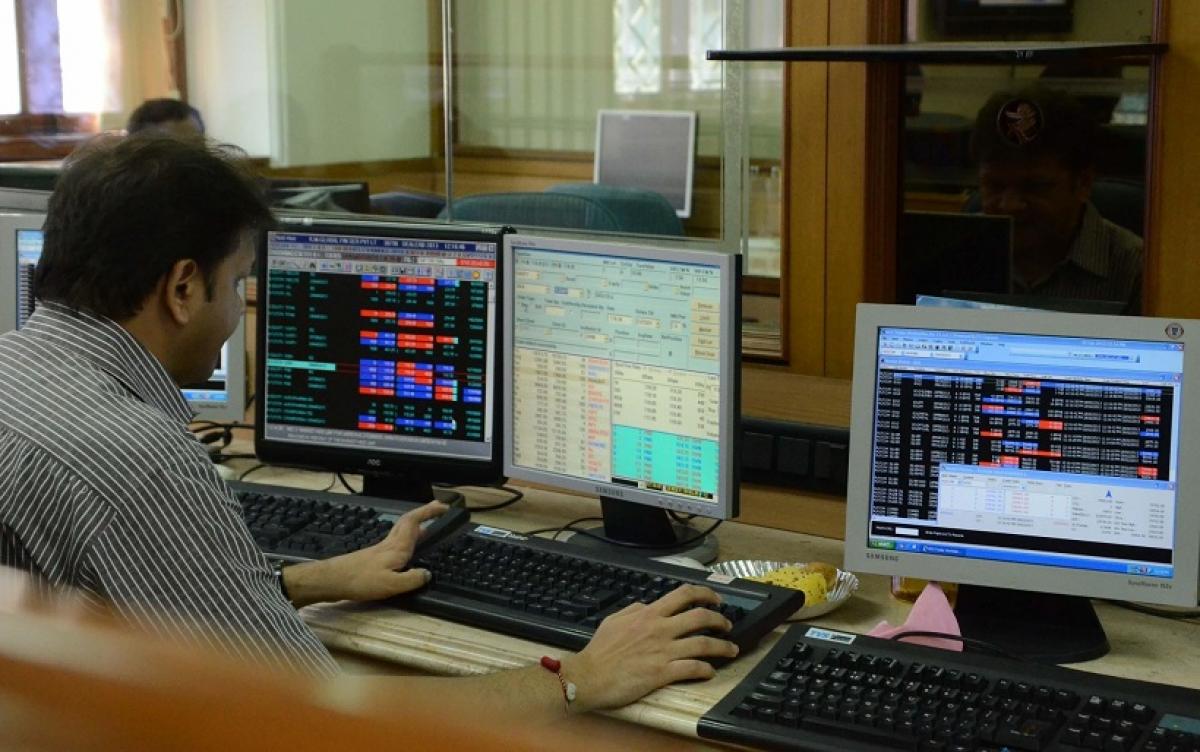Live
- Maharashtra records 32.18 pc voting with bright spot Gadchiroli at over 50 pc
- BGT 2024-25: Indian team undergoes rigorous fielding sessions at Optus Stadium in Perth
- IPL 2025: Rishabh Pant will go at around 25-28 crore in the auction, claims Robin Uthappa
- Hardik reclaims No.1 T20I all-rounder spot; Tilak Varma soars into top 10
- Poor air quality surging dry eyes, allergies in children & adults: Experts
- Nokia wins multi-billion 5G deal from Bharti Airtel for India operations
- War of words over ‘bogus’ voting between Sharad Pawar faction and Ajit Pawar group in Baramati
- Delhi HC pauses money laundering trial against P. Chidambaram in Aircel-Maxis case
- Maoist’s killing: Cops went by law, no question of politics on security, says K’taka HM
- Date for resuming India-UK free trade talks to be finalised soon
Just In

After scaling the highest levels in little over seven months, the movement of key Indian equity indices in the near-to-mid-term will be guided by factors like the Reserve Bank of India\'s monetary policy update on Tuesday and performance of monsoon, analysts said.
After scaling the highest levels in little over seven months, the movement of key Indian equity indices in the near-to-mid-term will be guided by factors like the Reserve Bank of India's monetary policy update on Tuesday and performance of monsoon, analysts said.
Trading during the trading week ended June 3 was once again marked by some positive sentiments, thanks to a slew of favourable date -- like the 7.9 per cent growth officially announced for the last quarter of last fiscal and that monsoon will be normal this year despite a week's delay.
In the process, the sensitive index (Sensex) tested the 27,000-point level once again at 27,008.14 points on June 3, eventually settling at 26,843.03 points. The barometer index had last seen the 27,000 level on October 29, 2015.
Similar was the case with the broader 51-share Nifty of the National Stock Exchange. It, too, scaled the long-illusive 8,200-point mark to end above that level for the first time since October 27, 2015.
Thus, the broader Nifty rose 64.15 points or 0.78 per cent during the week to close at 8,220.80 points, while the 30-scrip Sensex rose 189.43 points or 0.71 per cent to close at 26,843.03 points.
In an analysis, Angel Broking said it saw the range of 8,175 points to 8,134 points in the Nifty as important support levels.
"On the upside, we may see the index gradually move towards the next swing high of 8,336 points. A lot of individual stocks did well during the week as we had anticipated. We expect this out-performance in individual stocks to continue and advice traders to stick to a stock-specific approach."
In a similar vein, ICICI Directly Weekly Pulse said "We expect the index to remain in a rising trajectory and head towards the 8,300-8,400-points zone in coming weeks, where a round of profit booking is likely."
The stocks that did well were in sectors such as metals, the index for which was up 4.96 per cent on the BSE, as also automobile, public sector units, banking and IT. But consumer durables, healthcare, capital goods, realty and oil and gas lost ground.
Analysts said they were expecting the market sentiments to be ruled by both domestic and global developments in the coming week or two, such as the monetary policy update by India's central bank, and the the scheduled meeting of the US Federal Reserve subsequently.
"The Reserve Bank of India's bi-monthly monetary policy review on June 7 is unlikely to yield any significant outcome though market commentary from the central bank could set the tone for future economic initiatives," said Gaurang Shah, Vice President of Geojit BNP Paribas.
"The US Federal Open Market Committee meet scheduled for June 15 could have a decisive impact on global and emerging markets."
Some signals can also emerge from Finance Minister Arun Jaitley's quarterly performance review meeting with the chief executives of public sector banks and and financial institutions, that is scheduled on Monday.
Investors will also keep a close watch on the onset of monsoon, which the India Meteorological Department has said will hit Kerala around June 7 and bring with it above-normal rains after two years of drought.
"The rural economy is expected to traverse the revival path with forecasts of a bountiful 106 percent above-average monsoon," said Shah.
A similar research by Kotak Institutional Securities said besides the forecast of normal monsoon, the Met department's predictions on the distribution of rains forecasts also bodes well for almost all major crops.
"This should be positive for production volumes and help in improving rural incomes. We will watch for the sowing pattern, which may see a late start although should be well-supported by the July and August precipitation," Shah added.

© 2024 Hyderabad Media House Limited/The Hans India. All rights reserved. Powered by hocalwire.com







